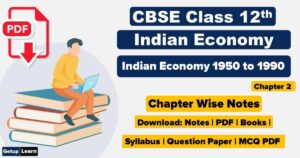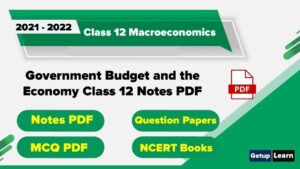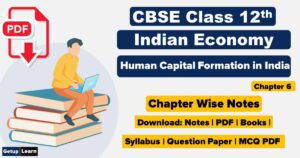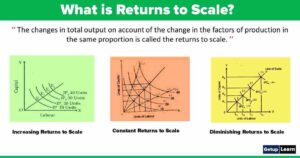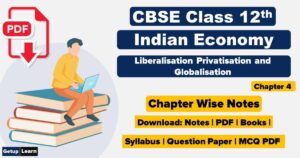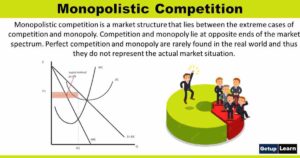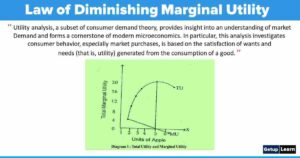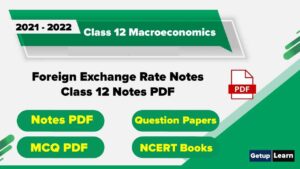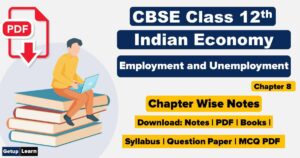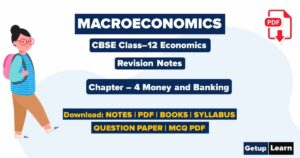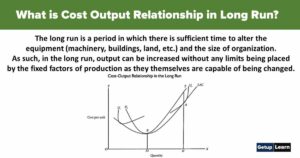Download Aggregate Demand and Aggregate Supply Class 12 Notes PDF, Question papers, MCQ PDF, NCERT Books, and Syllabus free of cost in just minutes. We provide complete study material of aggregate demand and aggregate supply Class 12 Notes.
This study material includes aggregate demand and aggregate supply Class 12 Notes, previous year question paper class 12, Mcq Pdf, NCERT books, Latest syllabus by CBSE 2022-2023.
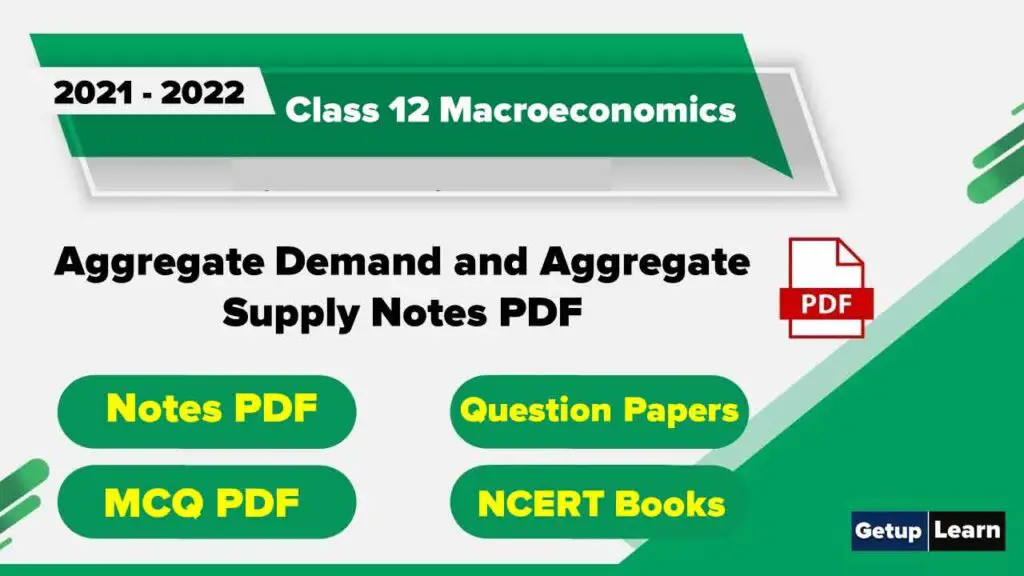
You can download aggregate demand and aggregate supply Notes PDF Class 12 the below article.
Table of Contents
- 1 Download Aggregate Demand and Aggregate Supply Class 12 Notes PDF
- 2 Aggregate Demand and Aggregate Supply Notes PDF
- 3 Aggregate Demand and Aggregate Supply Class 12 MCQ Questions PDF
- 4 Aggregate Demand and Aggregate Supply Class 12 MCQ Questions and Answers PDF
- 5 Aggregate Demand and Aggregate Supply Class 12 Questions and Answers PDF
- 6 Aggregate Demand and Aggregate Supply Class 12 Important Questions PDF
- 7 More About Aggregate Demand and Aggregate Supply Class 12 Notes
- 8 Aggregate Demand and Aggregate Supply Notes
- 9 Aggregate Demand Components
- 10 Types of Investment
-
11 Some Important Factors Aggregate Demand and Aggregate Supply Notes
- 11.1 Ex-Ante Savings
- 11.2 Ex-Ante Investment
- 11.3 Ex-Post Saving
- 11.4 Ex-Post Investment
- 11.5 Equilibrium Level
- 11.6 Full Employment
- 11.7 Voluntary Unemployment
- 11.8 Involuntary Unemployment
- 11.9 Under Employment
- 11.10 Investment Multiplier
- 11.11 Excess Demand
- 11.12 Inflationary Gap
- 11.13 Deficient Demand
- 11.14 Deflationary Gap
- 12 FAQ Related to Aggregate Demand and Aggregate Supply Notes PDF
Download Aggregate Demand and Aggregate Supply Class 12 Notes PDF
This is a downloading table for aggregate demand and aggregate supply class 12 notes pdf:
| Aggregate Demand and Aggregate Supply Class 12 Notes PDF | (HOW TO DOWNLOAD) |
| ????Aggregate Demand and Aggregate Supply Notes PDF | ????Download |
| ????Aggregate Demand and Aggregate Supply Class 12 MCQ Questions PDF | ????Download |
| ????Aggregate Demand and Aggregate Supply Class 12 MCQ Questions and Answers PDF | ????Download |
| ????Aggregate Demand and Aggregate Supply Class 12 Questions and Answers PDF | ????Download |
| ????Aggregate Demand and Aggregate Supply Class 12 Important Questions PDF | ????Download |
Aggregate Demand and Aggregate Supply Notes PDF
CBSE Class 12 Macroeconomics chapter 5 aggregate demand and aggregate supply Notes PDF are made by research of last ten years NCERT question paper. Further, they are all designed with the latest CBSE guidelines 2022-2023, and only important topics are covered because of the high chances to appear in exams.
NCERT Class 12 Macroeconomics chapter 5 aggregate demand and aggregate supplys Class 12 Notes is very useful for students because it is necessary to understand all important questions and answer them in an efficient manner.
[su_button url=”https://drive.google.com/file/d/1aUCzdOdj6NOKB1XuJZO2l7ZWMsPalbgu/view” target=”blank” style=”flat” wide=”yes” center=”yes” radius=”10″ text_shadow=”0px 0px 0px #ffffff” download=”https://drive.google.com/file/d/1aUCzdOdj6NOKB1XuJZO2l7ZWMsPalbgu/view” id=”download”]Download PDF[/su_button]

Download All: ????Macroeconomics Class 12 Notes PDF????
Download Class 12th Notes PDF
[su_spoiler title=”Macroeconomics Class 12 | Indian Economy Class 12” style=”fancy” icon=”plus-circle”]
Macroeconomics Class 12
Indian Economy Class 12
- Indian Economy on the Eve of Independence
- Indian Economy 1950 to 1990
- Economic Reforms Since 1991
- Liberalisation Privatisation and Globalisation
- Poverty
- Human Capital Formation in India
- Rural Development
- Employment and Unemployment
- Infrastructure
- Environment and Sustainable Development
- Comparative Development Experiences of India and Its Neighbours
[/su_spoiler]
With these aggregate demand and aggregate supply notes pdf sample papers, students will have no problem making revision notes before exams and they don’t have to waste time making CBSE revision notes. You guys can download macroeconomics notes class 12 in just minutes. Aggregate Demand and Aggregate Supply Notes Pdf notes are well structured and prepared based on CBSE latest syllabus class 12 2022-2023.
These NCERT macroeconomics notes chapter 5 aggregate demand and aggregate supply Notes PDF for class 12 are well-defined and easy-to-understand concepts and include some practical questions for practice purposes.
We provided CBSE notes in pdf format for Students and they can use sample papers for preparing for the CBSE board exam 2022-202. CBSE Class 12 macroeconomics chapter 5 aggregate demand and aggregate supply Notes is very important for exam perspectives because it is a practical question chapter, not theory-based chapter. And for exam perspective this important chapter because it has higher marks weightage in macroeconomics.
With the help of CBSE revision notes students can revise for the exam. Class 12 macroeconomics Chapter 5 aggregate demand and aggregate supply Notes are the best finest notes because these are prepared by very experienced teachers. Class 12 macroeconomics chapter 5 aggregate demand and aggregate supply is made in very easy language which helps the students understand easily.
Aggregate Demand and Aggregate Supply Class 12 MCQ Questions PDF
Below that you can download the aggregate demand and aggregate supply class 12 MCQ questions pdf. We have covered all related MCQ’s aggregate demand and aggregate supply class 12 MCQ questions in this pdf. You can practice all of them by these aggregate demand and aggregate supply MCQ questions PDF.
Aggregate Demand and Aggregate Supply Class 12 MCQ Questions and Answers PDF
Here are some of the aggregate demand and aggregate supply class 12 mcq questions and answers pdf mentioned below. You can download aggregate demand and aggregate supply class 12 MCQ pdf form. These are the most relevant MCQ questions and have a higher chance of appearing on exam papers.
Aggregate Demand and Aggregate Supply Class 12 Questions and Answers PDF
Here we are providing aggregate demand and aggregate supply class 12 questions and answers pdf and in this notes we have covered all Important Questions and Answers from Chapter 4 aggregate demand and aggregate supply. Aggregate Demand and Aggregate Supply notes of Economics Class 12 Important Questions are the best resource for students which helps in class 12 board exams.
Aggregate Demand and Aggregate Supply Class 12 Important Questions PDF
This is the aggregate demand and aggregate supply class 12 important questions pdf which we are providing for you. We have selected all those important questions from previous years’ question papers. If you learn the following aggregate demand and aggregate supply class 12 important questions you don’t have to open your textbook again and by these questions, you score high in exams.
More About Aggregate Demand and Aggregate Supply Class 12 Notes
CBSE is an educational board in India and is based on the NCERT syllabus for CBSE schools and other schools affiliated with the CBSE Board of India. Also, we are providing Study material for Class 12 macroeconomics for students so they can get rid of stress.
Getuplearn provides chapter-wise macroeconomics revision notes and short keynotes for the CBSE board exam. You can download aggregate demand and aggregate supply class 12 notes pdf Keynotes is easy to understand and also free downloadable PDF format so students can practice it for their exams and get good marks in their board examinations.
Getuplearn provides class 12 notes for subjects like Accounts, Economics, Hindi, Business Studies, English, and Physical Education. You can download free study material in pdf format for all streams science, commerce, arts, etc. Also, class 6 notes, class 7 notes, class 8 notes, class 9 notes, class 10 notes, class 11 notes, and class 12 notes.
Aggregate Demand and Aggregate Supply Notes
Aggregate Demand
Aggregate Demand refers to the total value of all final goods and services that are planned to buy by all the sectors of the economy at a given level of income during a period of time. AD represents the total expenditure on goods and services in an economy during a period of time.
Components of Aggregate demand are:
- Household consumption expenditure (C).
- Investment expenditure (I).
- Govt. consumption expenditure (G).
- Net export (X – M).
Thus, AD = C + I + G + (X – M)
In two sector economy AD = C + I
Aggregate Supply
Aggregate Supply is the money value of all final goods and services available for purchase by an economy during a given period. It is the flow of goods and services in the economy. Since, the money value of final goods and services is equal to net value-added, AS is nothing but the national income.
AS = C + S
Aggregate supply represents the national income of the country. AS = Y (National Income). The main components of aggregate supply are two, namely, consumption and saving. A major portion of income is spent on the consumption of goods and services and the balance is saved. Thus, national income (Y) or aggregate supply (AS) is the sum of consumption expenditure (C) and savings (S).
Aggregate supply is the money value of total output available in the economy for purchase during a given period. When expressed. In physical terms, aggregate supply refers to the total production of goods and services in an economy. It is assumed that in the short run, prices of goods do not change and the elasticity of supply is infinite.
????Demand: Definition, Importance, Types, Factors, Law, Demand Schedule
????Supply: Definitions, Determinants, Laws, Elasticity
Aggregate Demand Components
Aggregated demand means the total demand for final goods & services in an economy. It is actually Total (Final) Expenditure of all the units of the economy i.e. Households, Firms, Government & Rest of the World
The Various Components of Aggregate Demand:
AD = C + I + G + (X-M)
- Private (Household) Consumption Expenditure (C)
- Investment Expenditure (I)
- Government Expenditure (G)
- Net Exports (X-M)
Private (Household) Consumption Expenditure (C)
It comprises of households’ expenditure on the consumption of goods and services. These goods can be durable, semi-durable or non-durable. Consumption of households depends upon their Disposable Income & MPC.
Investment Expenditure (I)
It refers to the expenditure incurred by firms on the purchase of capital goods like machines, plant, equipment, etc. to increase the production capacity. Investment decision depends upon the relative values of MEI (Rate of Return) & ROI (Rate of Interest).
Government Expenditure (G)
It refers to expenditure incurred by the government on the purchase of consumer goods and capital goods to satisfy the collective wants of the society. For example– Public parks, hospitals, Roads, etc. Government expenditure depends upon the priorities of the government.
Net Exports (X-M)
It is the difference between exports and imports. It reflects the net demand for a domestic product by the rest of the world. Net exports depend upon many things like Foreign Trade Policy, Foreign Exchange Rate, Comparative Prices & Quality, etc.
Types of Investment
Following are two types of investment explained below:
Induced Investment
Real investment may be induced. Induced investment is profit or income motivated. Factors like prices, wages and interest changes that affect profits influence induced investment. Similarly, demand also influences it. When income increases, consumption demand also increases and to meet this, investment increases. In the ultimate analysis, induced investment is a function of income i.e., I = f(Y). It is income elastic. It increases or decreases with the rise or fall in income.
Autonomous Investment
Autonomous investment is independent of the level of income and is thus income inelastic. It is influenced by exogenous factors like innovations, inventions, growth of population and labour force, research, social and legal institutions, weather changes, war, revolution, etc.
But it is not influenced by changes in demand. Rather, it influences the demand. Investment in economic and social overheads whether made by the government or the private enterprise is autonomous. Such investment includes expenditure on building, dams, roads, canals, schools, hospitals, etc. Since investment in these projects is generally associated with public policy, autonomous investment is regarded as public investment.
Some Important Factors Aggregate Demand and Aggregate Supply Notes
Some important factors aggregate demand and aggregate supply notes:
- Ex-Ante Savings
- Ex-Ante Investment
- Ex-Post Saving
- Ex-Post Investment
- Equilibrium Level
- Full Employment
- Voluntary Unemployment
- Involuntary Unemployment
- Under Employment
- Investment Multiplier
- Excess Demand
- Inflationary Gap
- Deficient Demand
- Deflationary Gap
Ex-Ante Savings
Ex-Ante Savings: Ex-ante saving refers to the amount of savings that all the households intended to save at different levels of income in the economy at the beginning of the period. It is also known as planned savings.
Ex-Ante Investment
Ex-Ante Investment: Ex-ante investments refers to the amount of investment that all the firms plan to invest at a different level of income in the economy at the beginning of the period. It is also known as planned investment.
Ex-Post Saving
Ex-Post Saving: Ex-post savings refer to the actual or realised savings in an economy during a financial year at end of the period.
Ex-Post Investment
Ex-Post Investment: Ex-post investment refers to the actual or realised investment in an economy during a financial year at the end of the period.
Equilibrium Level
The equilibrium level of income is determined only at the point where AD = AS or S = I, .i.e. the flow of goods and services in the economy is equal to the demand for goods and services. But it cannot always be at full employment level also as it can be at less than full employment.
Full Employment
Full employment is a situation when all those who are able and willing to work at the prevailing wage rate, get the opportunity to work.
Voluntary Unemployment
Voluntary unemployment is a situation where the person is able to work but not willing to work at the prevailing wage rate.
Involuntary Unemployment
Involuntary unemployment is a situation where the worker is able and willing to work at the prevailing wage rate but does not get work.
Under Employment
Underemployment is a situation where all those who are able to work at existing wage rates, are not getting jobs. It refers to that situation in the economy where AS = AD or S = I, but without fuller utilisation of labour force.
Investment Multiplier
Investment multiplier (K) is the ratio of change in income (ΔY) due to change in investment ΔI.
K = ΔY ÷ ΔI or K = 1 ÷ 1-MPC or K = 1 ÷ MPS
Value of investment multiplier lies b/w 1 to-infinitive.
Excess Demand
Excess demand refers to a situation when aggregate demand exceeds aggregate supply corresponding to full employment.
Inflationary Gap
Inflationary gap is the gap by which actual aggregate demand exceeds the level of aggregate demand required to establish full employment. It measures the extent of excess demand.
Deficient Demand
Deficient Demand: When AD falls short of AS at full employment it is called deficient demand. In other words, AD < AS at the level of full employment. It is called deficient demand.
Deflationary Gap
The deflationary gap is the gap by which actual aggregate demand is less than the level of aggregate demand required to establish full employment. It measures the extent of deficient demand.
What is Aggregate Demand?
Aggregate Demand refers to the total value of all final goods and services that are planned to buy by all the sectors of the economy at a given level of income during a period of time. AD represents the total expenditure on goods and services in an economy during a period of time.
What is Aggregate Supply?
Aggregate supply is the money value of total output available in the economy for purchase during a given period. When expressed. In physical terms, aggregate supply refers to the total production of goods and services in an economy. It is assumed that in the short run, prices of goods do not change and the elasticity of supply is infinite.
What are the five components of aggregate demand?
There are various components of aggregate demand: AD = C + I + G + (X-M), Consumption Expenditure (C), Investment Expenditure (I), Government Expenditure (G), Net Exports (X-M).



